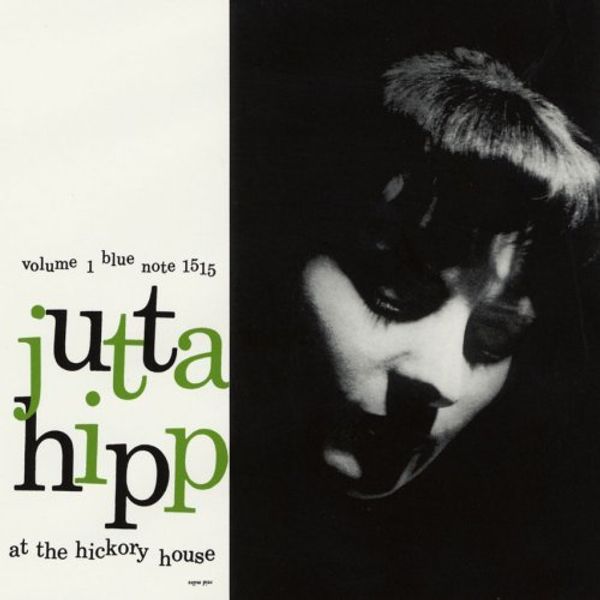Startseite › Foren › Über Bands, Solokünstler und Genres › Eine Frage des Stils › Blue Note – das Jazzforum › bft 4 – vorgarten › Re: bft 4 – vorgarten
es folgen die nummern 5 bis 8, allesamt erraten und ausdiskutiert…
#5

GITTE HAENNIG & THE FRANCY BOLAND KENNY CLARKE BIG BAND: MY KINDA WORLD
aus GITTE MEETS THE FRANCY BOLAND KENNY CLARKE BIG BAND, Hör zu, 1968
gitte haenning (vcl), benny bailey, idrees sulieman, derek watkins, dusko gojkovic (tp); ake persson, nat peck, eric van lier (tb); johnny griffin, ronnie scott, tony coe (ts); derek humble (as); john surman (bs, ss); francy boland (p, arr, co-leader); jimmy woode, jr. (b); kenny clarke (d, co-leader).
recorded 13.8.1969, lindström studios, köln
schlagersängerinnen singen jazz, die soundsovielte. nana mouscouri, joy fleming usw. brauche ich alle nicht, valente ist ok, aber hier macht das wirklich sinn, was man ja auf anhieb hört. für mich war es eine entdeckung, für die meisten von euch war die nicht mehr nötig.
#6

RITA REYS: YOU’D BE SO NICE TO COME HOME TO
aus THE COOL VOICE OF RITA REYS, philips 1957
rita reys (vcl), donald byrd (tp), hank mobley (ts), horace silver (p), doug watkins (b), art blakey (dm).
rec. 1955/56, USA
auf rita reys kam ich über meine beschäftigung mit inge brandenburg – die ihrer niederländischen konkurrentin nämlich ende der 50er einmal die auszeichnung der besten europäischen jazzsängerin wegnahm. aber dann diese platte: a-seite mit der holländischen combo ihres damaligen mannes wes ilcken (u.a. mit jerry van rooyen), b-seite dann mit verschiedenen variationen der jazz messengers. eine cool-platte mit den jazz messengers? fand ich schräg, geht aber gut, weil reys ganz nett zu allem singt (eigentlich finde ich sie mit ihrer stammband besser).
#7

JUTTA HIPP TRIO: TAKE ME IN YOUR ARMS
aus JUTTA HIPP AT THE HICKORY HOUSE, VOL.1, blue note 1956
jutta hipp (p), peter ind (b), ed thipgen (dm).
rec. 5.4.1956, hickory house, NYC
die merkwürdige jutta hipp mit peter ind, dem erfinder des solo-bass-jazz-konzerts und ed thipgen (vor allem durch das peterson trio bekannt, oder?). ich fand ihre geschichte immer sehr interessant: die frankfurter jazz-subkultur der 50er, dann der in sie verknallte leonard feather, der sie nach new york holt, dessen werben sie aber nicht nachgibt, weswegen er sie wieder fallen lässt, ihre völlige abkehr von jazz und klavierspiel und der späte ruhm als zeichnerin. als sie 2003 starb, wussten angeblich ihre engsten freunde nicht, dass sie mal jazzmusikerin war.
nach dem ich die platte mit zoot sims eher enttäuschend fand, waren die hickory-house-aufnahmen für mich eine offenbarung: rhytmisch, leicht, präzise, sehr kommunikativ, tolle atmosphäre… ob das jetzt mehr in richtung tristano geht oder horace silver (die sie ja beide toll fand) oder ob das was ganz eigenes ist, weiß ich nicht. dringt man durch die ganzen geschichten wieder zur musik vor, steht die sehr für sich, finde ich.
#8

TUBBY HAYES AND THE ALL STARS: AFTERNOON IN PARIS
aus RETURN VISIT!, fontana 1962
tubby hayes (vib), „jimmy gloomy“ (aka james moody; ts), roland kirk (ts), walter bishop jr. (p), sam jones (b), louis hayes (dm).
rec. 23.6.1962, NYC
habe ich auf meiner reise durch die discographie von roland kirk entdeckt und war sofort hingerissen von der frische und leichtigkeit dieses jams, der unter abenteuerlich spontanen bedingungen auf der kurzen USA-reise von hayes von quincy jones aufgenommen wurde. hier eine kleine zusammenfassung von hayes‘ eigener schilderung in den liner notes, die ich gerade nicht abtippen mag:
A Saturday morning in June 1962 and Tubby Hayes arrives at the recording studio on West 48th Street in New York City. A session has been slated for later that day with a pick-up group. None of the group has been aware of the date until the night before. One by one they wander in. All have been playing spots in various clubs until the early hours. Introductions are made. One member wonders who Tubby Hayes is, asks if he’s a rock `n‘ roll singer. This is Jimmy Gloomy, not his real name, as he probably shouldn’t be there at all – contractual reasons. Memories of Louis Armstrong: „It wasn’t me, sir. I won’t do it again“. Midday arrives and producer Quincy Jones suggests maybe they get started. But what to play? They don’t have a play list, have never rehearsed. Apart from pianist Walter Bishop Jnr, Tubbs has never met any of them. Quincy suggests they warm up with a blues, and they choose `Stitt’s Tune`, the theme of Tubb’s old band The Jazz Couriers – Tubbs and Gloomy on tenor sax, Roland Kirk providing counter melody on manzello and stritch, his customary hybrid horns. Next it’s a minor blues – a Kirk original `I See With My Third „I“‚, then a ballad medley, including `Alone Together‘, one of Tubbs‘ favourites. Next Tubbs switches to vibes for `Afternoon In Paris‘, with solos from Kirk and Gloomy on tenors and Bishop on piano, and an unrehearsed coda from one-man brass section Kirk on tenor, manzello and stritch. They round off the session with another Kirk original `Lady „E“‚, with Tubbs still on vibes and Kirk on flute. And then they’re through. Just time for bassist and drummer Sam Jones and Louis Hayes to get to Birdland and Kirk to the Five Spot for their first sets, and for Tubbs to return to the UK. In the space of just a few short hours they’ve recorded an exciting and memorable jazz album. That’s how it was and them were the days.
--